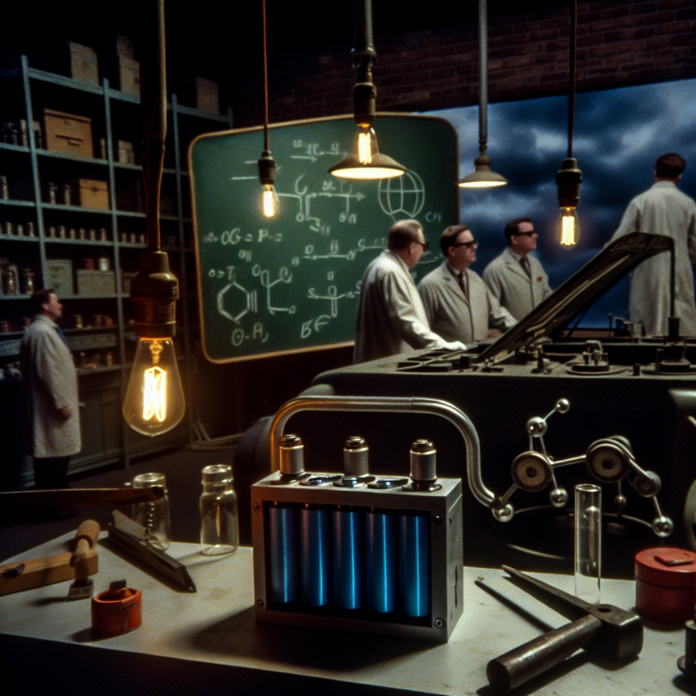Mana Battery Joins Geopolitical Race to Revolutionize Sodium-Ion Battery Technology
Introduction: A New Era of Battery Innovation
As global demand for renewable energy surges and concerns about lithium supply intensify, sodium-ion battery technology is emerging as a promising alternative. Mana Battery, a growing innovator in the energy storage sector, has entered the international race to refine and commercialize sodium-ion batteries. The company’s strategic efforts and recent breakthroughs position it at the forefront of one of the world’s most critical technological competitions in years.
The Geopolitical Stakes of Battery Innovation
Why Sodium-Ion Matters
For decades, lithium-ion batteries have dominated the energy storage market, powering everything from smartphones to electric vehicles (EVs). However, skyrocketing demand has increased pressure on lithium mining, leading to volatile pricing and environmental concerns. Sodium-ion batteries, leveraging the abundance and lower cost of sodium, present a sustainable and economically viable alternative.
Unlike lithium, sodium is readily available globally, reducing dependency on politically volatile regions. This shift alters the geopolitical map of energy security, prompting nations and companies to invest heavily in sodium-ion technology development.
Global Players and Strategic Investments
Several tech giants and governments — notably in China and the European Union — have ramped up efforts to reduce reliance on lithium imports by investing in sodium-ion battery research. Mana Battery, based in Colorado, is stepping onto this high-stakes playing field with a strong commitment to innovation, strategic partnerships, and clean energy leadership.
Mana Battery’s Entry and Vision
A Mission Aligned with Clean Energy Goals
Founded with a focus on sustainable electrification, Mana Battery is rapidly gaining recognition for its advanced battery technology research. The company’s CEO, Paul Aanensen, has spoken ardently about the role sodium-ion batteries could play in reducing global carbon footprints and increasing energy independence.
Mana Battery envisions a future where sodium-ion batteries support everything from residential solar storage systems to large-scale electric vehicles, offering a scalable and environmentally friendly energy storage solution.
Cutting-Edge Research and Development
At the core of Mana’s effort is a sophisticated R&D program located in Frederick, Colorado. The company is actively working to optimize critical battery components, such as cathode and anode materials, to enhance energy density, cycle life, and safety — key metrics that could determine commercial success.
Sodium-ion batteries have historically lagged behind lithium equivalents in energy density. Mana’s innovations in electrolyte formulation and cathode chemistry are aimed at bridging this gap without sacrificing the benefits of lower cost and environmental sustainability.
Strategic Partnerships and Funding Initiatives
Public-Private Collaborations
In March 2024, Mana Battery secured several public and private funding sources to accelerate its commercial roadmap. These include grants from the U.S. Department of Energy and venture capital investments from climate tech firms. Such support not only validates Mana’s technological potential but also reflects a broader U.S. strategy to cultivate domestic battery manufacturing capabilities.
Mana has also aligned with university research groups to ensure academic collaboration in areas such as electrochemical modeling and material testing. These partnerships will be critical as the company moves toward commercial-scale production.
Supply Chain Localization
With competition from dominant players in Asia, especially China, Mana is emphasizing supply chain localization to ensure product transparency and geopolitical stability. By sourcing raw materials domestically and committing to U.S.-based manufacturing, Mana hopes to position itself as a go-to supplier for North American and European markets concerned with supply reliability and ethical sourcing.
Challenges Ahead for Sodium-Ion Technology
Technical Barriers to Widespread Adoption
While sodium-ion batteries offer many advantages, several hurdles remain. The lower voltage and energy density compared to lithium-ion batteries limit their near-term applicability for some high-performance EV use cases. Mana Battery acknowledges these constraints and is focusing its first-generation products on grid storage and light mobility applications.
Other ongoing challenges include ensuring long-term battery cycle stability, enhancing cold-weather performance (a common concern for sodium-based chemistry), and reducing internal resistance for faster charging.
Global Competition Pressure
Mana’s ascent occurs against fierce international competition. Chinese firms, including big names like CATL, are already unveiling prototype sodium-ion packs ready for integration into electric bikes and low-range vehicles. Europe, too, is moving fast with industrial-scale projects and innovative research programs.
Mana must maintain a rapid pace in innovation and commercialization to stay relevant. The company’s leadership is confident that their focused approach and commitment to U.S.-based development will give them a competitive edge in the long run.
The Road Ahead: Commercialization and Impact
Near-Term Product Launches
Mana Battery plans to begin pilot-scale production by late 2025, with the first batch of batteries aimed at grid storage pilots in partnership with utility providers. These large-scale storage systems are ideal proving grounds for sodium-ion technology due to less stringent size and weight limitations.
The company is also in early talks with micro-mobility manufacturers exploring sodium-ion batteries for scooters, e-bikes, and low-range electric vehicles.
Long-Term Industry Implications
If successful, Mana Battery’s work could be a game-changer in reducing the cost of energy storage, making renewable energy a more viable option for widespread adoption across the globe. Sodium-ion technology could also reshape global battery supply chains and reduce geopolitical tensions tied to rare earth and lithium resources.
Moreover, an American company mastering sodium-ion battery production would signify a major win for U.S.-based clean tech innovation, with potential spillover benefits across related industries such as EV manufacturing, smart grid infrastructure, and portable electronics.
Conclusion: Powering the Future Sustainably
Mana Battery’s strategic entry into the sodium-ion race exemplifies the convergence of innovation, sustainability, and geopolitical awareness. As the world navigates away from fossil fuels and resource dependencies, sodium-ion batteries present a promising path toward a cleaner, more secure energy future.
With advanced research, key partnerships, and a clear commercialization roadmap, Mana Battery is positioning itself as a leader in a transformative technology that could redefine global energy systems. While challenges remain, the company’s progress underscores the vital role of bold innovation in the transition to sustainability.
Stay tuned as Mana Battery continues its journey to reshape the battery landscape — one sodium-ion cell at a time.


